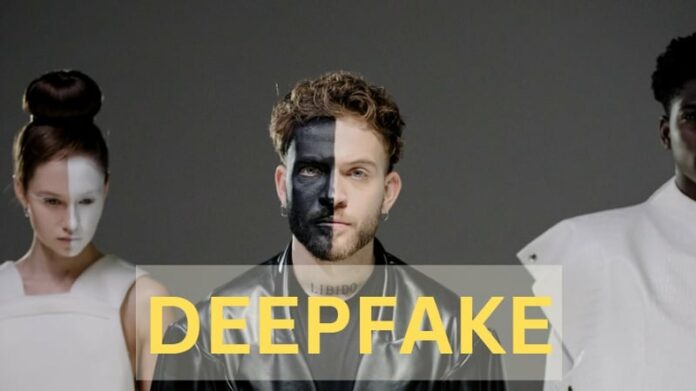Deepfakes have been garnering attention in the digital sphere, with the Ice Spice deepfake trend exemplifying the convergence of creativity, technology, and entertainment. This guide aims to delve into the intricate process of creating Ice Spice deepfakes, exploring their origin, impact, and ethical implications.
What Are Ice Spice Deepfakes?
Ice Spice deepfakes involve using artificial intelligence (AI) to superimpose the image and voice of Ice Spice, a popular rapper known for hits like “Munch (Feelin’ U),” onto other video clips. This phenomenon gained traction on platforms like TikTok and has since seen various creative applications.

The Ethical Landscape
While Ice Spice deepfakes can be a source of entertainment, they also raise significant ethical concerns. Misuse of deepfake technology can lead to misinformation and invasion of privacy. It’s crucial to use this technology responsibly and consider its potential impact on others.
Detecting Deepfakes
Spotting deepfakes can be challenging due to their realistic appearance. Look for unnatural facial movements, inconsistencies in lip-syncing, and out-of-context behavior. Research and verify content before sharing or engaging with suspected deepfakes.
Legal and Social Implications
The legal framework around deepfakes is still evolving. With the potential for misuse in political manipulation and personal reputation damage, there is a growing need for laws and regulations to address these issues.
Technological Solutions and Media Literacy
Technological advancements are leading to better detection tools for deepfakes. Educating the public on media literacy and the existence of deepfakes is essential to combat misinformation.
Recent Taylor Swift Deepfake Controversy
The recent incident involving Taylor Swift and deepfake technology underscores the growing dangers associated with AI miscreants. Swift became the target of explicit deepfake images that were widely circulated on social media platforms, including X (formerly Twitter), where one of her deepfakes was viewed over 45 million times, prompting the platform to suspend search results related to her.
This incident not only highlights the potential for harm to individuals’ reputations and mental health but also raises significant concerns about the safety and integrity of digital content.
The proliferation of deepfake technology poses a serious threat, particularly to women, as approximately 96% of deepfakes are pornographic and almost always feature women. This form of digital harassment has even infiltrated schools, where underage girls have been targeted with explicit, nonconsensual deepfakes by their classmates.
The incident with Swift has galvanized her fan base, with many taking to social media to protect her and set a precedent against such malicious attacks, recognizing the broader implications for privacy, consent, and security in the digital age.
Legislative efforts are underway to combat the spread of nonconsensual deepfakes. For instance, Virginia has banned deepfake revenge porn, and the DEEPFAKES Accountability Act has been reintroduced in Congress, aiming to criminalize the creation and distribution of these harmful images.
However, there’s a gap in legal protections across different jurisdictions, particularly in the U.S., where many states have yet to update their anti-revenge porn laws to address the technological advancements enabling the creation and sharing of fake images.
The incident also brings to light the need for robust AI regulation. The Canadian Security Intelligence Service has called deepfakes a threat to the country’s future, emphasizing the necessity for collaboration among governments, academics, and industry experts to maintain the integrity of globally distributed information and counteract the malicious application of evolving AI. This call for regulation is echoed worldwide as the potential for abuse of deepfake technology becomes increasingly evident.
The Taylor Swift deepfake horror story serves as a stark reminder of the dark side of technological advancement. It highlights the urgent need for comprehensive solutions, including legal reforms, better content moderation on social media platforms, and public awareness to safeguard individuals’ rights to privacy and dignity in the digital realm.
Future Trends
As AI technology advances, we can expect deepfakes to become more sophisticated. This underscores the importance of staying informed and prepared for future developments in this field.
Disclaimer on Deepfakes
The creation and dissemination of deepfakes—digitally altered videos or images that make it appear as though someone is saying or doing something they are not—have profound ethical, legal, and social implications. It is imperative to understand the dangers associated with deepfakes before engaging in their creation or sharing:
- Invasion of Privacy: Deepfakes can be used to create content without the consent of the individuals involved, infringing on their privacy and violating their rights to control their own image and actions.
- Misinformation and Manipulation: Deepfakes can spread false information, manipulate public opinion, and undermine trust in media, contributing to a post-truth society where distinguishing between real and fake becomes increasingly difficult.
- Harassment and Abuse: The technology is often used for malicious purposes, including harassment, bullying, and sexual abuse. Pornographic deepfakes, in particular, disproportionately target women, contributing to sexual violence and degradation.
- Legal Ramifications: Creating or distributing deepfakes can lead to legal consequences. Many jurisdictions are enacting laws specifically targeting non-consensual deepfakes, especially those of a sexual nature, with severe penalties for violators.
- Damage to Reputations: Deepfakes can cause irreversible harm to individuals’ reputations, affecting their personal lives, professional opportunities, and mental health.
- Security Threats: Deepfakes pose a significant security risk by enabling fraud, identity theft, and phishing scams, potentially compromising personal and national security.
- Ethical Considerations: Beyond legal implications, creating deepfakes raises ethical questions about the responsible use of technology, respect for others, and the integrity of our digital interactions.
Conclusion
Given these considerations, we strongly advise against the creation, distribution, or endorsement of deepfakes. It is crucial to approach emerging technologies with a sense of responsibility and ethical consideration for the impact they may have on individuals and society at large.
Engaging in or supporting the use of deepfakes not only harms others but also contributes to a broader culture of distrust and deceit. We encourage everyone to respect privacy, uphold truth, and promote positive digital citizenship.
FAQs
What is the purpose of Ice Spice deepfakes?
- Ice Spice deepfakes are primarily for entertainment, allowing creative expression and innovative content creation.
Are there ethical concerns with Ice Spice deepfakes?
- Yes, there are ethical considerations, especially regarding misinformation and the potential harm to individuals’ privacy and reputation.
How can one spot an Ice Spice deepfake on social media?
- Look for unnatural facial movements, glitches, or lip-sync inconsistencies, and verify the authenticity of suspected deepfakes.
This guide provides a comprehensive understanding of Ice Spice deepfakes, emphasizing the importance of responsible use and the balance between creativity and ethical considerations.









